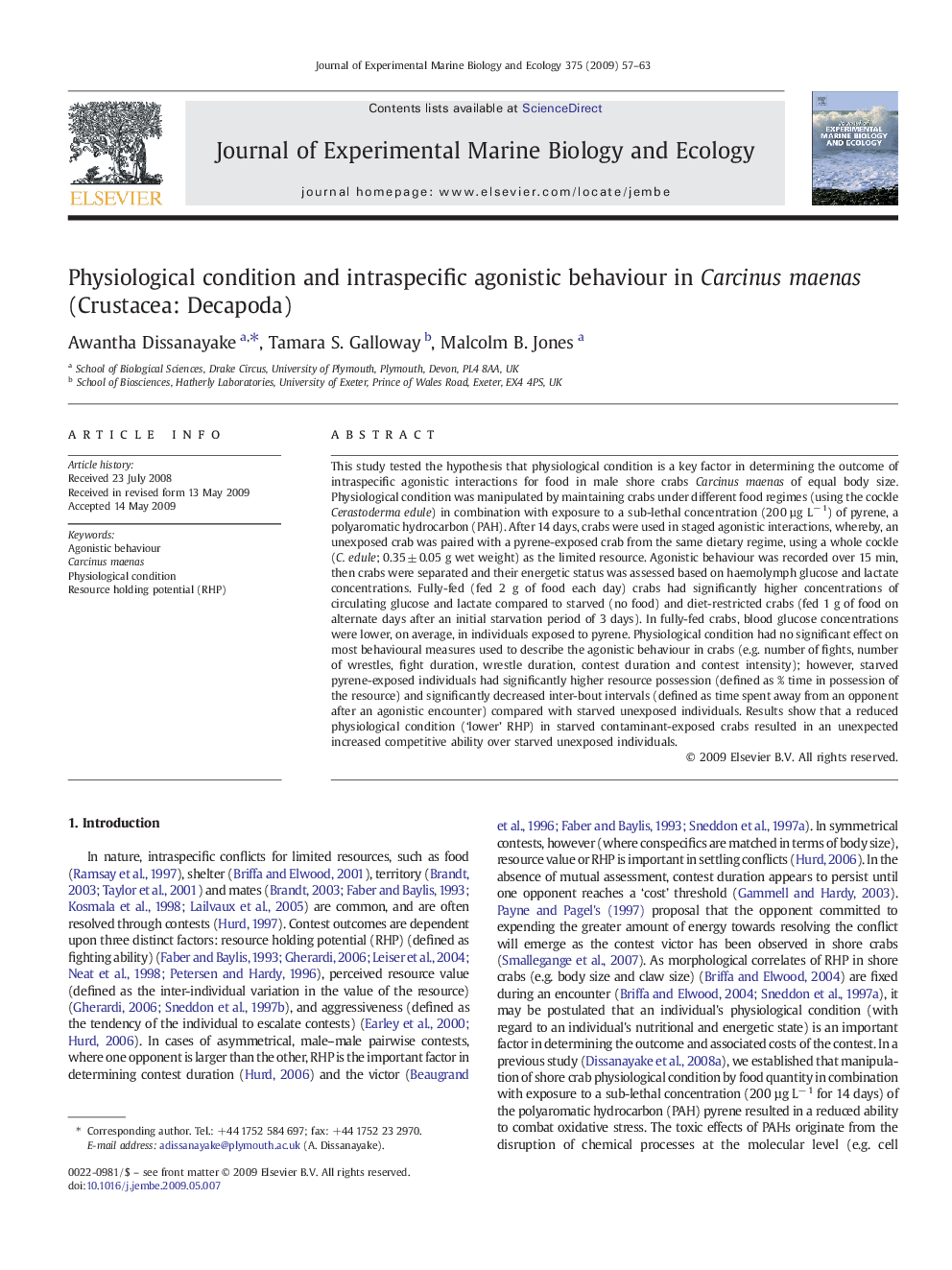| کد مقاله | کد نشریه | سال انتشار | مقاله انگلیسی | نسخه تمام متن |
|---|---|---|---|---|
| 4396929 | 1618480 | 2009 | 7 صفحه PDF | دانلود رایگان |
عنوان انگلیسی مقاله ISI
Physiological condition and intraspecific agonistic behaviour in Carcinus maenas (Crustacea: Decapoda)
دانلود مقاله + سفارش ترجمه
دانلود مقاله ISI انگلیسی
رایگان برای ایرانیان
کلمات کلیدی
موضوعات مرتبط
علوم زیستی و بیوفناوری
علوم کشاورزی و بیولوژیک
علوم آبزیان
پیش نمایش صفحه اول مقاله

چکیده انگلیسی
This study tested the hypothesis that physiological condition is a key factor in determining the outcome of intraspecific agonistic interactions for food in male shore crabs Carcinus maenas of equal body size. Physiological condition was manipulated by maintaining crabs under different food regimes (using the cockle Cerastoderma edule) in combination with exposure to a sub-lethal concentration (200 µg Lâ 1) of pyrene, a polyaromatic hydrocarbon (PAH). After 14 days, crabs were used in staged agonistic interactions, whereby, an unexposed crab was paired with a pyrene-exposed crab from the same dietary regime, using a whole cockle (C. edule; 0.35 ± 0.05 g wet weight) as the limited resource. Agonistic behaviour was recorded over 15 min, then crabs were separated and their energetic status was assessed based on haemolymph glucose and lactate concentrations. Fully-fed (fed 2 g of food each day) crabs had significantly higher concentrations of circulating glucose and lactate compared to starved (no food) and diet-restricted crabs (fed 1 g of food on alternate days after an initial starvation period of 3 days). In fully-fed crabs, blood glucose concentrations were lower, on average, in individuals exposed to pyrene. Physiological condition had no significant effect on most behavioural measures used to describe the agonistic behaviour in crabs (e.g. number of fights, number of wrestles, fight duration, wrestle duration, contest duration and contest intensity); however, starved pyrene-exposed individuals had significantly higher resource possession (defined as % time in possession of the resource) and significantly decreased inter-bout intervals (defined as time spent away from an opponent after an agonistic encounter) compared with starved unexposed individuals. Results show that a reduced physiological condition ('lower' RHP) in starved contaminant-exposed crabs resulted in an unexpected increased competitive ability over starved unexposed individuals.
ناشر
Database: Elsevier - ScienceDirect (ساینس دایرکت)
Journal: Journal of Experimental Marine Biology and Ecology - Volume 375, Issues 1â2, 15 July 2009, Pages 57-63
Journal: Journal of Experimental Marine Biology and Ecology - Volume 375, Issues 1â2, 15 July 2009, Pages 57-63
نویسندگان
Awantha Dissanayake, Tamara S. Galloway, Malcolm B. Jones,